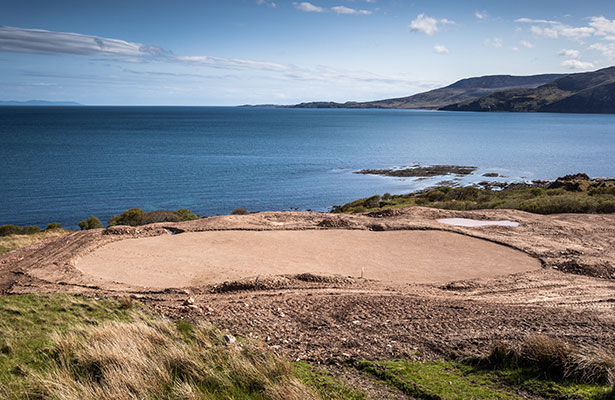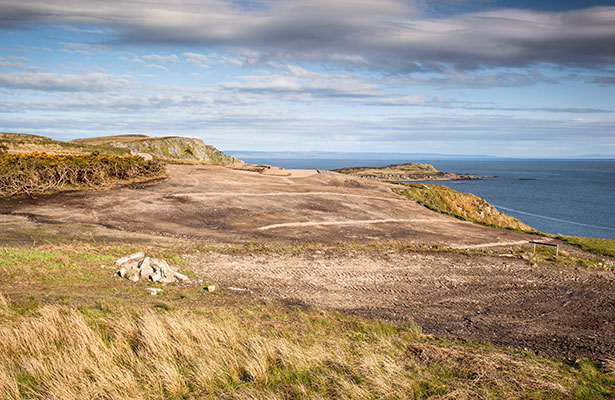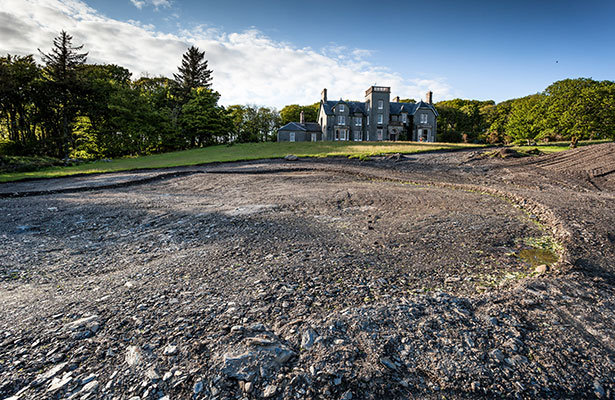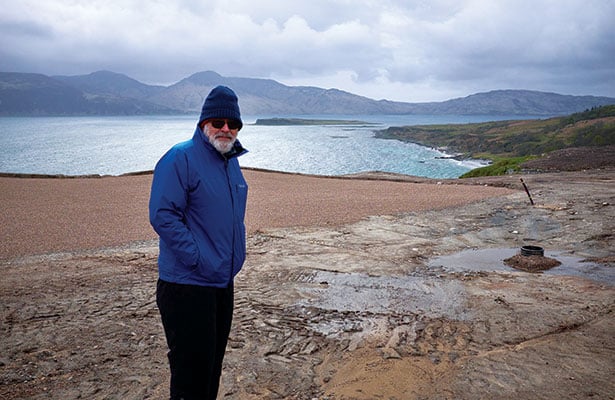When Bob Harrison Completes His New Design On The Breathtaking Scottish Island of Jura, It Could Be the Aussie Architect’s Finest Work Yet.
When the Open Championship is held in Scotland, the focus of the golf world shifts to the birthplace of our game. And the many golfing pearls dotted across her majestic coastline. St Andrews, Muirfield, Carnoustie, Turnberry, Royal Troon and Royal Dornoch are household names for those who have – and haven’t – travelled to her ancient shores. Throw in Royal Aberdeen, Prestwick and North Berwick as fun alternatives and it’s hard to argue against this being the greatest golf destination in the world.
While visitors gravitate towards the older links there, there are a number of modern designs with a strong following. Kingsbarns (outside St Andrews) is the most established, followed by Castle Stuart, which has hosted several Scottish Opens. These newer layouts have primarily been developed and/or designed by North Americans, including signature professionals such as Jack Nicklaus (Gleneagles) and Tom Wesikopf (Loch Lomond) to proper designers including Tom Doak (Renaissance Club), Gil Hanse (Castle Stuart & Crail).
All of which makes the new Ardfin course on the sparsely populated Scottish Island of Jura so different and unique. Here, in the home of golf, is a new development not only being designed by Australian Bob Harrison (below) but also developed by an Aussie financier, Greg Coffey.
Harrison describes the project as “perhaps the most significant and enjoyable” of his career. The genesis of the project dates back to when Coffey and his family first visited the Southern Hebrides and fell in love with the vast 14,000-acre Ardfin Estate, which for decades had been used chiefly for deer stalking. Ardfin not only had the land necessary to build a spectacular golf course, but it was also home to the stately Jura House and cottages and stables dating to the 18th century. Coffey’s plan was to restore and upgrade the amenity to 5-star standards, and to allow access to the golf course for friends, family and a limited number of lodge guests.
For the first ever course on Jura to be a success, it needed to be of a standard sufficient to satisfy the tastes of both the developer and expected clientele. Coffey selected Harrison as his designer partly because of the role he played building the ultra-private Ellerston course for Kerry Packer. It was also due to their mutual love of shiraz, Test cricket and this particular corner of Scotland.
To appreciate just how special this project is for Harrison, it’s necessary to understand that Jura lies less than a kilometre from the island of Islay, home to the timeless Machrie Golf Links. Prior to meeting Coffey, Harrison fell in love with Machrie and made numerous trips to the Hebrides to play what he calls the “wildest links in Scotland.” For Harrison to be able work on the island next door, and leave his own design legacy for Scotland, has been a dream come true. “Any course in the home of golf would be exciting,” says Harrison. “But to have such a beautiful and spectacular site is the icing on the cake. It’s become my favourite place on earth, and I have a reverence for the landscape.”

the island of Islay.
Beyond proximity to one of the quirkiest links in golf, is a site of rare natural beauty overflowing with scenic possibilities. The Coffeys own more than 15km of Jura coastline, along with seven private islands between their shores and Islay’s. Harrison had his choice of land, and selected an area around the manor house, closest to the larger offshore islands. The opening seven holes will play to the east of Jura House, and the final 11 west.
One of Harrison’s chief design tasks was to submit to the scenery while building holes that compliment the views. To avoid the feeling of superfluous elements or gimmicks, but not be overwhelmed by the outlooks. But these are among the most rugged and untouched panoramas in Britain. Not surprisingly, Harrison aligned holes to point beyond the narrow Sound towards Islay, as well as straight along the majestic Jura shoreline. Some holes are set down along rocky beaches and others atop towering cliffs rising hundreds of feet from the sea. Those away from the dramatic views are often blessed with natural features or historic stonewalls, which Harrison used strategically within his design.
Harrison describes the landscape as “old world” and his design objective to “drop the course into it with as little disturbance as possible, and with absolutely nothing of a pristine nature.” There are no cart paths at Ardfin, nor a carpark. There isn’t even going to be a clubhouse. Just pure, raw golf.

construction.
Despite obvious quality away from the cliff edges, it’s the holes nearest the water that will take your breath away. These include spectacular par 3s beyond giant chasms, long holes across old stone cottages and drivable par 4s toward greens perched seemingly at the edge of the abyss. It’s not going to be play easy, but it’ll beunforgettable and impossible not to fall in love with.
The landscape at Ardfin is something you might expect of a Peter Jackson film; certainly unusual for golf and difficult for construction. Harrison is quick to credit his construction crew, Irish contractors SOL, for having toiled through a challenging winter and for having the patience to deal with what he describes as about the hardest site you could imagine. “The contractors have been magnificent, given the logistics of working on the island, the rock and the heavy ground conditions at hand,” he says. “I’m grateful for their efforts, and the fact that nothing has been too much trouble for them.”
The local ferry to Jura can only transport two turf trucks per week, so with the green bases now shaped and ready for grassing the process at this point is to seed fairways and tees and grass two greens per week through summer. They expect to have the course fully finished by September, and for Ardfin to be ready for play by next April, subject to winter conditions.

From the first tee to the final green, Ardfin is an impossibly beautiful experience and vastly different from the traditional links the Scottish golf tourism industry has marketed itself. Crucially, it’s also a break from the modern American developments found elsewhere in the country. In a land where golf has been played for more than half a millennium, to have built something so fresh, distinctive and spectacular is quite an achievement. It would be a stretch to call Ardfin ‘Australian’, but it is a credit to Greg Coffey’s vision and Bob Harrison’s design skills to bring a golf course to life on such challenging terrain. Those familiar with Harrison’s best work in Australia will want to play this course when finished, especially those who have been unable to weasel their way onto Ellerston.
• Darius Oliver is a golf course design consultant and the author of Planet Golf and Planet Golf USA, which are available via planetgolf.com.au




